Group members
| Erik Arvid
|
Hosszu
|
s200154
|
| Jacob
|
Clemmensen
|
s144069
|
| Björgvin
|
Hjartarson
|
s154659
|
| Breno
|
Strüssmann
|
s193580
|
| Tobias
|
Thyssen
|
s143786
|
| Hashim
|
Hameed
|
s193272
|
Introduction
Written by Tobias
To analyze the current and desired state of portfolio management within the cable array management department in Ørsted, a series of tools have been selected as part of a combined toolbox that a potential portfolio management consultant might use. This toolbox focuses on providing preliminary information needed to handle the dynamic decisionmaking process that the fast-moving world of sustainable energy sourcing is subject to [1]. where traditional project management focusing on the classical triple constraint been time, cost and scope. A portfolio manager also needs to ensure all aspects of the portfolio are aligned with organizational strategy and vision. [2] Therefore a wide variety of tools are needed to cope with this process, a selection of them is presented in the section below.
Tools
Tool 1 - SWOT
Written by Hashim
Definition
SWOT is a framework model used for identifying and analyzing the strength, weakness, opportunities and threats within a company. 
Figure 1: SWOT model - Made by TeamSted
Practical guidelines
- Strength: The first element highlights the strength within a company and investigates how they distinguish from competitors.
- Weakness: The second element highlights the weakness within a company, and critically investigates what other companies do better.
- Opportunities: The third element highlights the opportunities within a company, and looks into the company development of new ideas that lead to new markets.
- Threats: The fourth element highlights the threats within a company, and investigates what may affect the success and growth of a company.
Benefits and limitations
Generally, SWOT is an efficient and valuable tool to gain insight into, what is realistic to achieve and where the focus area should be. The managers within a company can easily identify and evaluate if their goals are achievable and if they are not, then the SWOT model can be modified by going through each of the four elements.
Tool 2 - Stakeholder Mapping
Written by Björgvin
Definition
Stakeholder mapping is a visual representation of stakeholders in a system. This can be done in a variety of ways depending on the purpose of the mapping, most often focusing on defining relationships within the system (Directions of influence)[2] or characteristics of the stakeholders (as with the Power influence stakeholder grid).
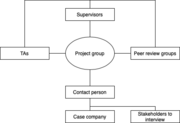
Figure 2: Stakeholder map: example of a visual representation of stakeholder relations - Made by TeamSted
Practical guidelines
This description focuses on general stakeholder identification and grouping and mapping relationships.
When mapping, both individual stakeholders and stakeholder groups can be included as well as internal and external stakeholder, all to the level of detail relevant for the mapping.
- Begin by identifying all relevant stakeholders to be included.
- Define the goal and structure of the mapping
- Draw a diagram with stakeholders represented as notes and their relations as ties
“Identify Stakeholders is the process of identifying project stakeholders regularly and analyzing and documenting relevant information regarding their interests, involvement, interdependencies, influence, and potential impact on project success.” [2]
Benefits and limitations
Stakeholder mapping provides “..highly visual representations of complex situations,"[3] that creates and overview and consensus about e.g. the boundries of the system or insights into stakeholder caracteristics or relations. The map however only provides a view within the set scope to a varying detail, where too complex a mapping can cause confusion and too simple, not show the full picture.
Tool 3 - Power influence stakeholder grid
Written by Hashim
Definition
Power influence stakeholder grid is a crucial aspect of the stakeholder management. 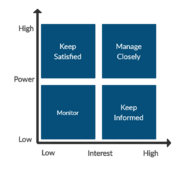
Figure 3: Power Influence Grid - Made by TeamSted
Practical guidelines
The tool contains of three steps[4]:
- 1. Identify the stakeholders: The first step in a power influence grid is to find the key stakeholders related to a project and identifying the individuals that have interest in the outcome of the project.
- 2. Prioritize the stakeholders: The second step is to prioritize the stakeholders. The manager must map or classify them in relation to engagement level of the project. The mapping process is divided into the level of interest and level of influence. The level of interest refers to stakeholders that are affected by the project outcome, but they have no power to influence project requirements. The level of influence refers to stakeholders that have power in setting and modifying project requirements.
- 3. Understanding key stakeholders: The third and last step is to understand the key stakeholders. It is important to understand how the stakeholders feel about the project, and figure out how to engage and communicate with them.
Benefits and limitations
After the 3 steps, the stakeholders will be displayed into the 4 quadrants of the model. The four elements of the model are: "Keep Satisfied", "Manage closely", "Keep Informed", and "Motivate". Those quadrants tell the project manager how to proceed with each of the stakeholders in order to have a successfull project.
Tool 4 - Bubble diagram
Written by Tobias
Definition
The Bubble diagram is a multipurpose visual decision-making tool used in project portfolio management. 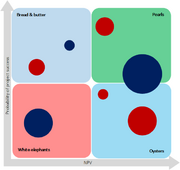
Figure 4: Risk\Reward bubble diagram - Made by TeamSted
The diagram originates in a standard x-y plot were circles are used to indicate a given entry. Where a bubble diagram differentiates from similar diagrams is in the information stored in the diagram. Two extra dimensions can be added to the plot in color-coding of the entire and the size of the circles.
Practical guidelines
The most common type of bubble chart is a Risk-Reward chart showing the Net Present Value(NPV) relative to the probability of success of a given project.
This is also the type that is used to showcase a bubble diagram as seen in Figure 4. [5]
Here the urgency of the project is quantified in a color code where red marks the most urgent projects.
The size of the circle indicates the extent of the project, this can contain several elements dependent on the project type i.e information needed or the number of estimated work hours.
The Risk-Reward chart maps projects into four distinct categories to help the portfolio manager make a decision based on the individual projects' business profitability. The four categories are the four quadrants of the diagram, each is named after how the manager should relate to them:
- Bread and Butter: The Projects located in the upper left quadrant falls into this category. They are low-risk projects but there projected outcome is also low therefor they are a safe investment.
- Pearls: If a project falls in the upper right quadrant they are called Pearls these projects have high profitability of success and have potential large rewards. These are the projects that a business should aspire towards.
- White Elephants: White Elephants are located in the lower-left corner these projects are high-risk low reward projects. These projects should be avoided.
- Oysters: All projects in the lower right quadrant holds the potential of becoming a star project do to a potential high NPV, but they come with a low probability of success. These projects are often innovative new projects and therefore should be considered by the decision-maker.
Benefits and limitations
A bubble diagram is a versatile tool that can be used as give a relatively fast visualization to base a decision on.
It is easy and fast to understand.
It does come with the weakness that it requires data that can contain errors and be hard to quantify.
Tool 5 - Competency mapping
Written by Björgvin
Definition
Yuvaraj [6] defines competency mapping as “a process of identifying key competencies for an organization, the jobs and functions within it.” [6] And further highlights that it helps individuals and organisations understand themselves by showing them where to direct career development efforts based on the identified strength and weaknesses. It is recommended to use competency mapping to address the two following questions[7]:
- What skills, knowledge and characteristics are required to do the job?
- What behaviour has the most direct impact on performance and success in the job?
Competencies can be categorised under the following groups[8]:
- Technical or functional: Associated with the technical or functional expertise required to perform the specific role.
- Managerial: Knowledge, attitude and skills required to plan, organize and mobilize various resources.
- Human: Knowledge, attitude and skills required to motivate, utilize and develop human resources.
- Conceptual: The ability to visualize the invisible and think at abstract levels.
And specified as one of the following types of characteristics, where the latter are easier to develop [7]:
- Motives: The things a person consistently thinks about or wants and that which causes action. Motives ‘drive, direct or select’ behaviour towards certain actions or goals and away from others.
- Traits: Physical characteristics and consistent responses to situations or information.
- Self-concept: A person’s attitudes, values or self-image.
- Knowledge: Information a person has in specific content areas.
- Skill: The ability to perform a certain physical or mental task.
Practical guidelines
Many frameworks have been proposed for competency mapping focusing on different aspects where Yuvaraj[6] suggests the following approach for identifying competencies for an organisation and a job within a function:
- Identify the department for mapping.
- Identify the Structure of the organization and select the grades & levels.
- Job Description from individuals and departments.
- Conducting Semi-Structured interviews.
- Collecting interview data’s.
- Classify the required Skill list.
- Identify the skill levels.
- Evaluate identified competencies and skill levels with immediate superiors and other heads of concerned departments.
- Preparation of Competency calendar.
- Mapping of Competencies.
Where they can be more specificly mapped within e.g. The Personal Competency Framework which consists of 45 competencies under six main headings (intellectual, personal, communication, interpersonal, leadership, result oriented) where performance is evaluated on a scale from 0-5 and importance on a scale from 1-5[7].
Benefits and limitations
Competency mapping provides a frame for matching expectations between businesses and employees and overview of how things are and what has to be done. The limitations of competency mapping lay in the lack of guidance on how to act on those insights [6].
Tool 6 - RACI Chart
Written by Erik
Definition
The RACI chart is a special RAM chart (responsibility assignment matrix) that can be used when roles, responsibilities and level of authority among the team members are to be specified. To define the involvement of stakeholders in a project the chart uses responsible, accountable, consult and inform statuses. The RACI is a very useful tool when the roles and responsibilities need to be clarified. For instance when different members of the project team are from different departments or organizations [9].
Practical guidelines
The meaning of the letters[10]:
- R = (Responsible): Who is completing the task.
- A = (Accountable): Who is making decisions and taking actions on the task(s).
- C = (Consulted): Who will be communicated with regarding decisions and tasks.
- I = (Informed): Who will be updated on decisions and actions during the project.
Benefits and limitations
The chart gives information about the employees workload showing the roles assigned to each person. The user can see whether someone has too many tasks and responsibilities or could take some more.
However PM thinks that working with this matrix can be a bit confusing about the required actions [10]:
"This tool explains each person’s role, but the necessary action(s) for each role can be unclear. Some feel that it’s not clear whether the responsible or accountable plans the task. With that being said, you could look at RACI in this way – apply the matrix as deemed necessary."
"You choose if the responsible or the accountable plans the task. The consult role is unclear. The project manager and the person consulted need to decide whether the consulted will only give direction when asked or whether they will offer direction when they feel it is suitable, and make sure their input is implemented."
Tool 7 - Porter's Five Forces of Competitive Position Analysis
Written by Erik
Definition
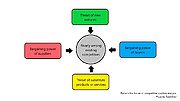
Figure 6: Porter's Five Forces - Made by TeamSted
Porter's Five Forces of Competitive Position Analysis is a clean framework for determining and evaluating the strength and position of a business organization. The tool is based on five forces that determine the competitive intensity and attractiveness of a market. The power in a business situation can be easily identified by the help of the theory. Porter´s five forces provides an adequate overview not just of the strength of an organization´s current competitive position, but of the desired strength in the future. In terms of strategic analysis the five forces theory could be a useful tool to analyze areas of strength, improve weaknesses, avoid mistakes and whether new products or services are potentially profitable[11].
Practical guidelines
In order to use the Porter's Five Forces of Competitive Position Analysis you need to identify the five forces.
The five forces are:
- 1. Supplier power: "An assessment of how easy it is for suppliers to drive up prices. This is driven by the: number of suppliers of each essential input; uniqueness of their product or service; relative size and strength of the supplier; and cost of switching from one supplier to another.
- 2. Buyer power: An assessment of how easy it is for buyers to drive prices down. This is driven by the: number of buyers in the market; importance of each individual buyer to the organisation; and cost to the buyer of switching from one supplier to another. If a business has just a few powerful buyers, they are often able to dictate terms.
- 3. Competitive rivalry: The main driver is the number and capability of competitors in the market. Many competitors, offering undifferentiated products and services, will reduce market attractiveness.
- 4. Threat of substitution: Where close substitute products exist in a market, it increases the likelihood of customers switching to alternatives in response to price increases. This reduces both the power of suppliers and the attractiveness of the market.
- 5. Threat of new entry: Profitable markets attract new entrants, which erodes profitability. Unless incumbents have strong and durable barriers to entry, for example, patents, economies of scale, capital requirements or government policies, then profitability will decline to a competitive rate.
Arguably, regulation, taxation and trade policies make government a sixth force for many industries."
Benefits and limitations
Five forces analysis helps to understand the factors affecting profitability in a specific industry, and can help to inform decisions relating to: whether to enter a specific industry; whether to increase capacity in a specific industry; and developing competitive strategies.
The tool is designed for use on a macro-level. Using the model for an individual firm is not recommended.
Tool 8 - Roadmapping in Program Management
Written by Jacob
Definition

Figure 7: Example of a roadmap - Made by TeamSted
Technology roadmapping refers to the process of visual planning on multiple layers such as: Marketing, product or development. By compiling a time-based chart, alignment of previous layers can be achieved towards one integrated planning approach. Typically the roadmap is done by a group of people within a company through work-shopping.
The method of technology roadmaps were first recognized in the 1970s in use by Motorola in an effort to integrate their technology and product development/planning. Since then, many different variations and versions of the roadmap has been developed for different purposes like service/capability and knowledge assets. However, all types of roadmaps share the common central idea of forecasting the effects of certain elements into future or past goals. All types also use three categories for layers of planning: Resources perspective of technologies/resources, delivery perspective of products/services/systems and purpose perspective such as strategic objectives/markets/business.
If done successfully, roadmapping in program management can be a powerful tool to carefully analyse and define the need for initiatives and programs and their design, but also to administer the programs and their underlying activities. Depending on the application and stretegic level of use, the roadmap can be done at different detail-levels each requiring a deeper understanding of the firm.
Practical guidelines
Roadmaps can be applied in different phases of program management. It can be used to design a program from scratch or it can be used to review and/or improve an existing program. There is also two different approaches based on whether you start from a top-down perspective (diagonal starting top right) creating a vision, objective and initiatives and following a market pull or from bottom-up (diagonal starting bottom left) by planing ideas/projects, linkage, feedback and milestones following the technology push.
In the following, the method for designing a roadmaps from scratch is described but if the map is used to review/improve, some steps can just be skipped depending on the situation. (B) Marks the top-down approach of backcasting and (F) marks the bottom-up approach of forecasting:
The general approach is to; ask key questions, get key input, map key activity and forecast key output:
- Key questions: (F) How will basis-elements shape the future development of the higher layers? or which elements on the lower levels are required to comply with the next higher layers' requirements? (B) Which elements are required to comply with the next layers' requirements?
- Key input: (F) Identify current technology, competency, or project portfolio as the base-layer of the roadmap and set strategic goal(s) to pursue development in a specific direction. (B) Setting strategic goals to pursue development in a specific direction.
- Key activity: (F) Estimating future trends and possibilities, finding logical developments and strategically aligned uses of resources available right now. Also deriving necessary activities, projects and elements to attain a goal, considering the risk or influence of different scenarios. (B) Identifying deriving necessary activities, projects and elements to attain a goal.
- Key output: (F) For example a realization that the company holds unnecessary or undesired assets of competencies/projects that cannot be utilized in the future. (B) A streamlined project portfolio that links the different initiatives logically towards a specific strategic goal
Benefits and limitations
As previously mentioned in the definition, the key benefits of roadmapping in program management are coordination and alignment. A well executed roadmap offers a high-level scope and focus on interdependencies, which serve as an enabler for guaranteeing fit between the programs elements. However, roadmaps also improve program management in more ways such as: Improving commitment, avoiding mistakes of gaps in programs, providing a common direction/focus, stakeholder management, benefit/value creation, risk management, improve collaboration, improve decision making, clarification of responsibilities.
The main limitation on the other hand of roadmapping is that it takes a lot of work to make and is generally a resource heavy process. To create an excellent roadmap, a full understanding of the organization and environment is needed and usually requires involvement of high-level stakeholders. Another pitfall of roadmaps is that they can become too specific or detailed, making it harder to interpret for the target audience.
Tool 9 - Decision-making Hierarchy
Written by Breno
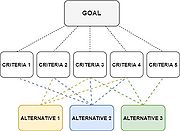
Figure 8: Analytic Hierarchy Process (AHP) - Made by TeamSted
Definition
The decision-making hierarchy is an approach that is considered to be an important factor when designing portfolio governance practices.
Practical guidelines /how to
To meet the desired objectives, the portfolio governance has to develop a decision-making hierarchy based on organizational governance principles, in order to reduce the risk of component failure and prejudice the success of the portfolio. An example of decision-making hierarchy tool is the Analytic Hierarchy Process (AHP), which can be seen on Figure 8. To apply the AHP a clear goal must be defined in the begining, and then the following criterias for that goal should be designated and later the alternatives containing those criteria should be raised. With this tool it is possible to analyse diferent alternatives to reach the desired goal, by applying different weights for each criteria.
Benefits and limitations
According to PMI standard[12] it is stated that: "...it is important that decision-making responsibility is at the level where competence, accountability, and authority reside. There are complexities to this approach. For example, in organizations where employees are not ultimately accountable for their actions or are not made to feel accountable for their actions, there will be a greater need for controlling practices. In other circumstances, an experienced and respected component manager and team may be given greater autonomy and decisio-making powers than is typically given to component managers at a similar level."
Tool 10 - BCG Matrix
Written by Breno
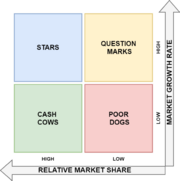
Figure 9: Example of BCG Matrix template - Made by TeamSted
Definition
The BCG Matrix (Boston Consultant Group) is a world wide known tool that is manly applied for consideration of products, however it can also be used as a tool when trying to visualize a company`s project portfolio. The matrix consists of 4 quadrants, each of those represent a state the project is currently in. Therefore a skeptical look must be applied. Different views from distinct people from all of the company`s departments should be considered in order to create an accurate Matrix. The horizontal axis of the matrix correspond to the "Relative market share", and the vertical axis is the "Market growth rate" of the considered projects. An example of BCG Matrix can be seen on the Figure 9, and as shown, the 4 different quadrants are defined as: "Question Marks", "Stars", "Cash Cows" and "Poor Dogs".
Practical guidelines
To start a BCG Matrix a portfolio of projects must be defined. Then, the projects must be placed in the matrix according to their relative market share and the market growth rate. After the matrix has been structured the analyzes of its quadrants comes to action. If a project is placed in the "Cash Cows" quadrant it means that this is a very important project for the company and must be kept because it is from its revenue that the "Stars" and the "Question Marks" projects are being sustained from. However, if a project is placed in the "Poor Dogs" quadrant, a divestment on this project is highly recommended and it should be kept aside until it is cut from the company´s portfolio. The projects that are in the "Stars" quadrant have a robust power of growth and expansion, therefore they should be stimulated with investments in order for them to become "Cash Cows". In the other hand, a further analysis must be made regarding the projects that are found in the "Question Marks" quadrant, because two possible paths can be chosen for the projects future: invest resources on it so it becomes a "Star", or withdraw resources from it in order to have sufficient resources to other projects and it will consequently for the "Poor Dogs" quadrant and die. One important consideration related to the "Question Marks" quadrant is that not all projects can be selected to receive investment and become "Stars", a part of the projects must be disregard and left apart so that others can thrive.
Benefits and limitations
The benefit of the BCG Matrix is it´s relative simplicity to be understood. It´s visualization is also one advantage that permits rapid and clear interpretation once it is understood. Since it is made with only two axis, there are only two variables to be reflected about. However, this is also a disadvantage, because projects have more variants than only relative market share and market growth rate. Another disadvantage to be considered is that in order for it to be made, different members from different departments must be present and agree while developing the matrix, otherwise it will not become a reliable matrix and decisions will further lead the company to failure. In addition, the placing of the projects considering the both axis is considered to have a high percentage of subjectivity, which is why the "BCG Matrix" is not considered as a common tool to be applied among the literature.
References
- ↑ Ørsted. (2019). Ørsteds annual report.
- ↑ 2.0 2.1 2.2 PMI. (2017). A guide to the project management body of knowledge (PMBOK guide) / Project Management Institute. Project Management Institute.
- ↑ Walker, D. H., Bourne, L. M., & Shelley, A. (2008). Influence, stakeholder mapping and visualization. Construction management and economics, 26(6), 645-658.
- ↑ Mind Tools Content Team. (n.d.).Stakeholder Analysis: Winning Support for Your Projects. Accessed 2020, 27 February. Retrieved from [1]
- ↑ Bubble_diagram_in_portfolio_management
- ↑ 6.0 6.1 6.2 6.3 Yuvaraj, R. (2011). Competency mapping. International journal of scientific & engineering research, 2(8), 1-7.
- ↑ 7.0 7.1 7.2 Sanghi, S. (2016). The handbook of competency mapping: understanding, designing and implementing competency models in organizations. SAGE publications India.
- ↑ Naqvi, F. (2009). Competency mapping and managing talent. IUP Journal of Management Research, 8(1), 85.
- ↑ Roles_and_responsibilities_in_project_team
- ↑ 10.0 10.1 Santos, J, M, D. (2018, November 20). Understanding Responsibility Assignment Matrix (RACI Matrix). Accessed 2020, 02 March. Retrieved from [2]
- ↑ CGMA. (2013, June 11). Porter’s Five Forces of Competitive Position Analysis. Accessed 2020, 02 March. Retrieved from [3]
- ↑ PMI. (2017). The Standard for
PORTFOLIO MANAGEMENT. Project Management Institute.